Sharper Pixels
The push for pixel perfection at the heart of the enthusiast retro movement—and the company that wants those pixels to look better than you remember.
Today's GIF comes from The Legend of the Mystical Ninja, because it reminds me of happier times, before my game crashed.
Sponsored By … You?
If you find weird or unusual topics like this super-fascinating, the best way to tell us is to give us a nod on Ko-Fi. It helps ensure that we can keep this machine moving, support outside writers, and bring on the tools to support our writing. (Also it’s heartening when someone chips in.)
We accept advertising, too! Check out this page to learn more.
143
The number of Super NES Classic consoles that eBay sold every hour between September 29 and October 1, according to Rolling Stone. The average price of the console, which relies on emulation and includes 21 games, was between $162.10 and $165—or around double its sticker price. The success of the tiny system, which has sold out repeatedly since its September release, has created a fresh interest in the Super NES, with many clones of the 16-bit console, many relying on emulation, released in recent months.
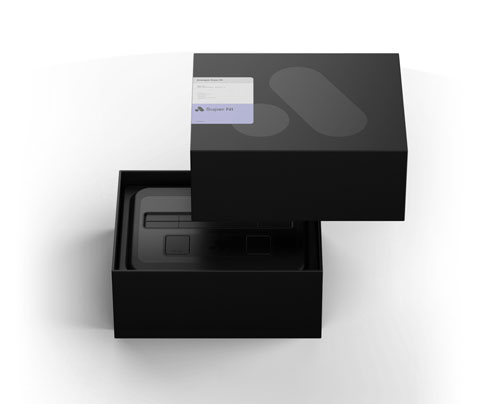
The Analogue NT. (handout photo)
The company that’s setting the pace for high-end retro clones
Super NES clones aren’t a dime a dozen—really, in many cases, they tend to be in the $40 to $70 range. They’re also known for not being able to play more esoteric cartridges—think Game Genies and the like.
But when the retro company Analogue announced it was stepping into the market back in October with the $190 Super NT, it was discussed in hushed tones by various press outlets.
And for good reason. The company, over the past seven years, has gained a reputation for hitting the high end of the market in a way that suggests a level of seriousness that it took a while for retro games to earn on their own. And compared to its prior product, the $449 NT Mini (a Nintendo Entertainment System revamp), it actually seemed like a bit of a deal.
But the price tags, nonetheless, suggest a certain kind of buyer—one that wants a pixel-perfect past. After all, why grab something expensive with a cartridge slot in 2017 unless you've spent a lot of money on a video game collection?
Analogue founder Christopher Taber, likewise, talks about vintage gaming in ways that one might talk about classic film or hi-fidelity records, and mentions the idea of his target audience being “enthusiasts.”
“A lot of people are OK with skipping through single tracks in 128kbps with earpods, or watching a great movie, streaming, in low quality on a tablet,” he explained in an email interview. “Enthusiasts are not. We like to experience things ideally. Simple as that.”
These devices, as a result, tend to evoke the same approach one might tag on an audiophile—someone who might spend a week’s pay on a decent pair of headphones, or pay extra for a fancy music player that supports FLAC files.
But beyond that, they reflect something else—an evolution of a basic approach that the company has been polishing for seven years, first with a home version of a Neo Geo arcade machine.
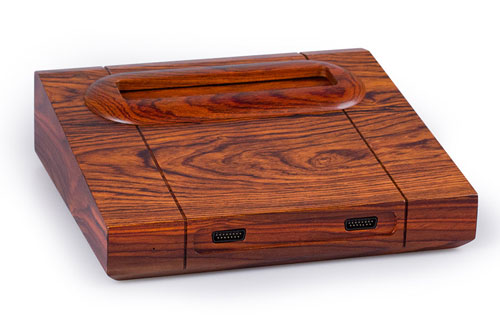
The Analogue CVMS Slim, in its $1299 "Black Label" form. (Hardcore Gamer)
That initial system, the Analogue CMVS, looked unlike any other video game system of its time, retro or otherwise. The machine and its arcade-quality joysticks used exotic high-end woods, rather than the cheap plastic that’s the preferred medium of most gaming devices.
“I've always had a lot of interest in craftsmanship and just in general, well-made things,” he said of his thought process. “Things that are designed to last a lifetime. I don't buy a lot of things, but when I do, its something well made, that I hope will last forever, or nearly.”
The approach also, to some degree, reflected a canny bit of arbitrage. The Neo Geo, produced by SNK in the 1990s, had a reputation as a high-end gaming console even during its peak years, but as it aged, an interesting phenomenon started to occur: The home console’s rarity meant that it was actually cheaper to get a hold of an old SNK arcade machine and run the cartridges from that instead.
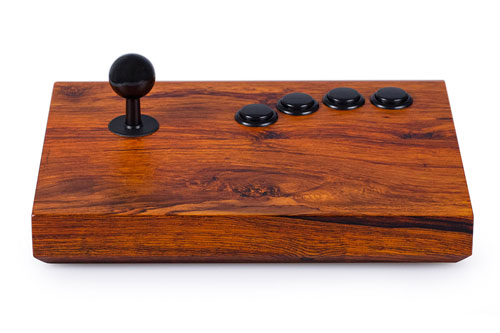
The controllers on the Analogue CVMS Slim were pretty epic, too.
The price difference meant that many gamers were actually trying to get a hold of the MVS (Multi-Video System) arcade carts, rather than the AES (Advanced Entertainment System) carts intended for the home market. And with console modders coming up with their own variations on the MVS for hundreds of dollars, Taber saw an opening.
“I thought, hell, for that price tag, I could make an incredibly beautiful and high quality system—much, much better than what people were already paying a ton for,” he said.
The hard part, of course, was designing a device that could sell for $649—and ensuring that it looked like it was worth that much. Wood was the answer design-wise, but also proved useful from a functional standpoint—it allowed Taber to prototype his designs relatively inexpensively while still giving them a different feel from a video game of yore.
That said, he ran into a variety of hiccups in getting the product out, including having to work with multiple woodworkers before finding the right one and struggling with the sourcing of parts.
“We ran into all sorts of unforeseen issues with the materials, workability, reliability, functionality and so on,” he said. “Had to solve countless obstacles before we had a final, solid unit.”
Eventually, though, they figured out the issues—and Taber, who put together a few thousand Analogue CMVS and Analogue CMVS Slim units by hand, took those big lessons to future products.
Since then, Taber's company has expanded its reach into Nintendo consoles, with the help of an array of vendors, suppliers, and developers.
While the Super NT isn’t built from wood (like the Analogue CMVS) or aluminum (like the Analogue NT consoles), it doesn’t feel like a step down that the Super NT is coming in plastic this time around—for one thing, it clearly feels like a better fit for the system, which uses the mandate to put its own twist on the Super NES look; for another, it perhaps brings what might have been a much pricier system one step closer to affordability.
You can kinda tell the same guy who made the wood controllers probably had his fingerprints all over the plastic ones, too.
“Most people would think that the level we go to in general is extreme, but what we've learned is that it’s only as extreme as you want. We never really stop adding things or making tweaks. It’s kinda crazy.”
— Coury Carlson, one of the hosts of the YouTube channel My Life in Gaming, discussing the approach that he and fellow host Marc "Try4ce" Duddleson take in their hunt for pixel perfection. One of the channel’s most popular videos explains the ins and outs of the XRGB-mini Framemeister, a device that costs hundreds of dollars, but makes it possible to scale up the pixels on classic video game consoles to look good on modern television sets. Since then, the duo has highlighted how to reach pixel perfection with a variety of systems, including the Game Boy, the Nintendo 64, and the Playstation 2. Some of their suggested approaches, culled from various corners of the internet, cost hundreds of dollars, require specialized cables, lean on professional-quality video monitors, or are only possible with modding. (Good luck plugging in an HDMI cable into a yellowed Super NES from 1991.) The duo’s research-heavy approach has been helped along by vendors and enthusiasts like HD Retrovision, db Electronics, RetroRGB, and Voultar’s Modshop, who have helped supply Carlson and Duddleson with equipment for testing. “We try to make our videos accessible for every level—show the possibilities but never say ‘You should do this,’” Carlson added.
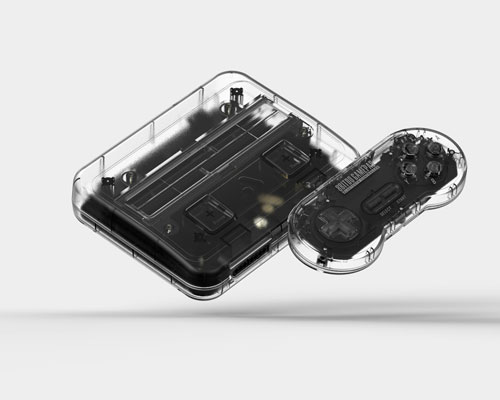
The Analogue Super NT, in its transparent plastic form. It's been at least 15 years since anything Nintendo-related has been this transparent.
The tech that makes the Super NT different from a Super NES—but also the same
So, going back to my recent Mystical Ninja disaster, it’s worth emphasizing that if I were to shove that game’s cartridge into an original Super NES, it would have had no problem displaying the boss, as long as I made sure to keep the cartridge clean.
But there would be other problems: The system, with its 240p resolution, was designed for a traditional cathode-ray tube monitor (CRT), and most HDMI televisions are simply not designed to handle this resolution. Sometimes, an image won’t show up; other times, it’ll get blurry and experience noticeable input lag.
Certainly, there are solutions to this problem, such as those highlighted in this My Life in Gaming video. But because of differences in Super NES consoles, to get the best image would require making sure I have the right model, along with the right cables and equipment. I might even want to mod the system to ensure maximum pixel quality from the original hardware. While possible, that could get extremely costly.
Analogue’s Taber says that, while there’s a place for this kind of approach, many gamers just want a simpler option.
“Modding is unavailable to 95 percent of people; most people aren't a part of the absolute most hard core communities to even know about this stuff,” Taber argued, adding that many don’t “have the modding skills to do it themselves, or want to invest the time and money.”
That said, the company isn’t afraid of using ideas from the modding world. In recent years, Analogue has taken the basic approach of recreating the hardware of the systems being supported through the use of a field-programmable gate array (FPGA), a kind of reprogrammable chip that can be used to recreate the functions of another chipset.
Analogue spearheaded this approach with the help of Kevin “Kevtris” Horton, whose claim to fame among hobbyists is developing a mod to make the NES HDMI-capable. The mod came about due to his prior work with FPGA development.
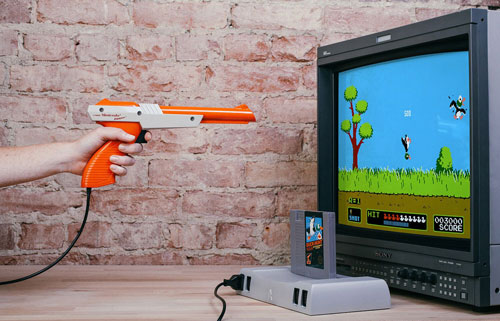
Yes, the Analogue NT Mini supports Duck Hunt. No, you can't play Duck Hunt with an LCD monitor.
Horton’s work helped provide the hardware brains behind the Analogue NT Mini, and the approach is also apparent with the Super NT. (It also was a key reason why he was picked by Motherboard, which syndicates this newsletter, to be one of of the site’s Humans of the Year in April.)
“Kevin’s been making FPGA systems for the last 20 years; it’s virtually his life’s work,” Taber noted. “His knowledge of retro video game hardware and understanding of its inner workings is truly one of a kind.”
But while Kevtris is a great asset to have in Analogue’s corner, the company’s detailed testing process is also a major factor that helps give the chips their power. Taber noted that, in an effort to ensure system parity between a Super NES and an FPGA, the company relied on an array of beta testers to try out the entire Super NES library, along with many accessories.
“Our development process and testing process is highly sophisticated and involves running an original system in parallel with our system and watching games running on them both on a low hardware level,” he explained, “meaning we can see exactly whats happening. This allows us to make sure they are running exactly the same.”
Of course, that cuts both ways—if a game slowed down or featured a graphical error on the original hardware, that’s what you’re gonna see on the Super NT.
“You'll be playing all your games exactly how they were originally released,” he said.
(Fortunately, my Mystical Ninja glitch wasn’t something on the original cart.)
four
The size, in megabits, of the commercial release of Super Turrican, a 1993 action game for the Super NES. The game was supposed to be six megabits in size, but the game’s publisher, Seika, pushed to publish on a smaller cartridge size—leaving out a game level, certain graphics, and other features. The developer held onto the game, however, and after Taber heard of the tale, Analogue offered to officially license the full cartridge as a “launch title” of sorts for the system. Taber says the idea was “explicitly to preserve a piece of Super Nintendo history—to bring something to the world that never was.”
So clearly, a high-end approach speaks to a certain kind of gamer, one who has both a serious collection and a great appreciation for what such a collection represents.
But does it speak for everyone? That question’s a little cloudier.
John Hancock, a prominent video game collector known for his years helping to organize the Portland Retro Gaming Expo as well as his appearances on the popular Metal Jesus Rocks YouTube channel, recently pondered the split between high-end consoles and low-end ones in a YouTube clip of his own.
Hancock, a self-described “budget collector” who finished a decades-long quest to acquire a full Super NES retail collection earlier this year, emphasizes that the premium approach taken by Analogue and others “has its place,” though he gets why many people might choose a cheap clone or even a Raspberry Pi instead.
“The need arises when other budget options are not fully compatible, have quality issues, and do not display in 1080p,” he explained in an email, adding that while the strategy isn’t for everyone, “it will be an option for some, as it will offer the best way to play old-school games.”
For his part, Taber says that the existence of a high-end market for playing retro games simply reflects the same kind of approach used in other artistic mediums.
“The difference between these mediums and video games, is that they have been cultivated and are respected, culturally,” he said. “Video games are only just starting to get a modicum of respect.”
With Analogue’s various consoles, he suggests that the end goal is to give gaming, slowly earning respect as an artistic form, the right vessels to survive for the long haul of history.
“We want to help elevate the medium of video games—a call to respect its history,” Taber added. “For the value and joy in exploring, analyzing, and—most importantly—playing.”
:format(jpeg)/2017/12/tedium113017-1.gif)
/2017/12/tedium113017-1.gif)


/uploads/ernie_crop.jpg)